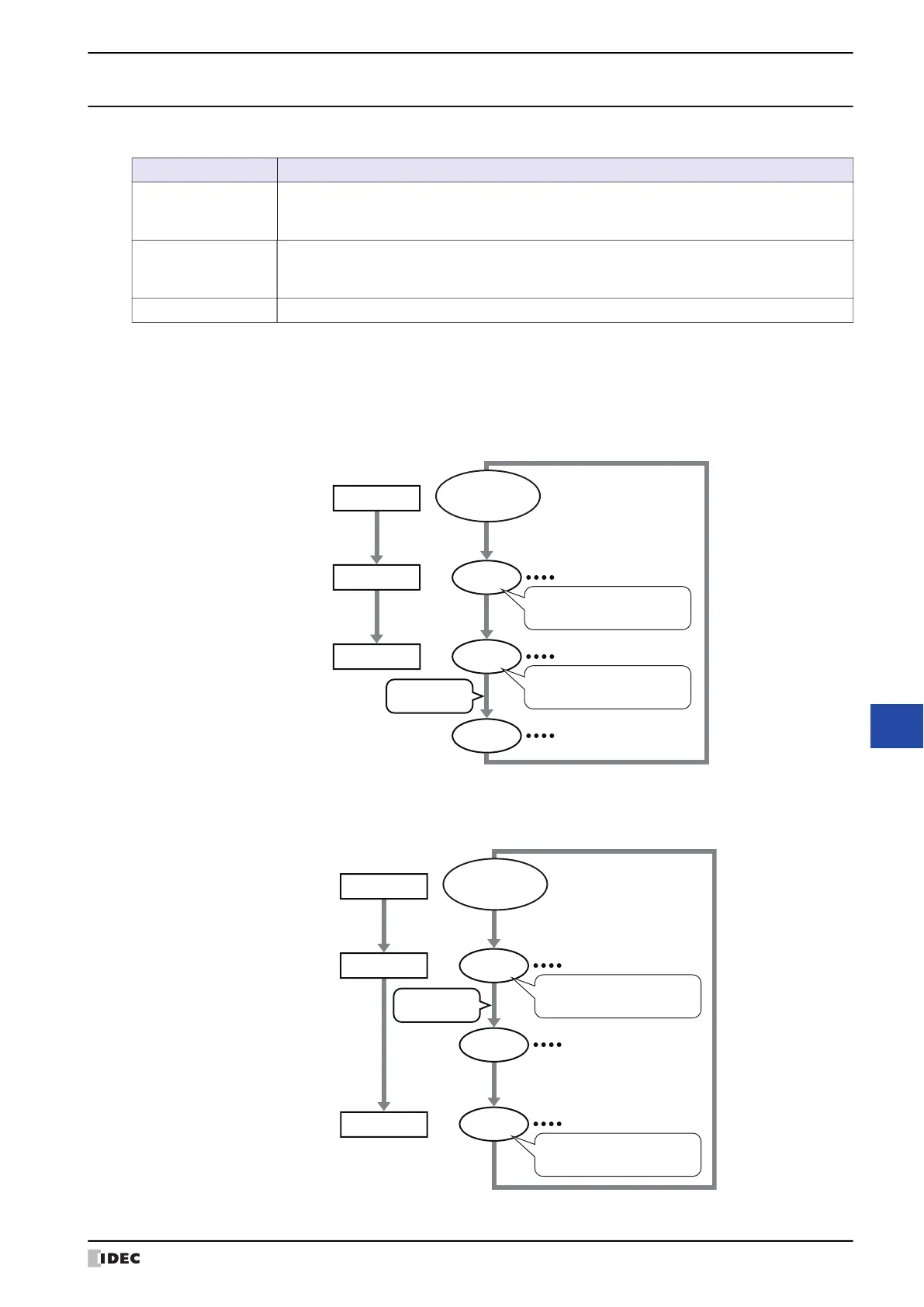WindO/I-NV4 User’s Manual 13-3
1 Overview
13
Alarm Log Function
1.2 Alarm States
Alarms have three states: occurred, recovered, and confirmed.
Example: When the source device address (the device address to monitor) is D100-0, the error state (when an alarm
has occurred) is ON, the channel is set to Unlock, and the used key button is CHECK
When the source device address is ON, the alarm changes to the “Occurred” state. When the source device
is OFF, the alarm changes to the “Recovered” state. When CHECK is pressed, the alarm changes to the
“Confirmed” state.
If CHECK is pressed before the source device address changes to OFF, the alarm changes to the “Confirmed”
state regardless of the state of the source device address.
Alarm state Details
Occurred
Indicates that an alarm has occurred. There are two types of alarms that occur.
First Alarm: The first alarm that occurs in a state where no alarms have occurred.
Second and later: An alarm that has occurred while another alarm is active.
Recovered
Indicates that the alarm that occurred has been recovered from.
However, for channels set to lock, the alarm is not recovered from until a key button is pressed
(CHECK or All Chk.).
Confirmed Indicates the key button CHECK or All Chk. was pressed.
Record occurrence time
D100-0 : ON
D100-0 : OFF
D100-0 : OFF
Source device address state
Occurred
Record recovery time
Recovered
Record confirmation time
Confirmed
Alarm Log data
Press CHECK
No alarm
occurring state
NO/NC is NO, so the state is
“Occurred”
Lock/Unlock is Unlock, so the
state is “Recovered”
Alarm state
Record occurrence time
D100-0 : ON
D100-0 : OFF
Alarm state
Occurred
Record confirmation time
Confirmed
Record recovery time
Recovered
Alarm Log data
Press CHECK
D100-0 : OFF
Source device address state
No alarm
occurring state
NO/NC is NO, so the state is
“Occurred”
Lock/Unlock is Unlock, so the
state is “Recovered”

